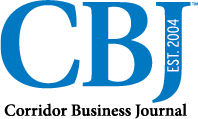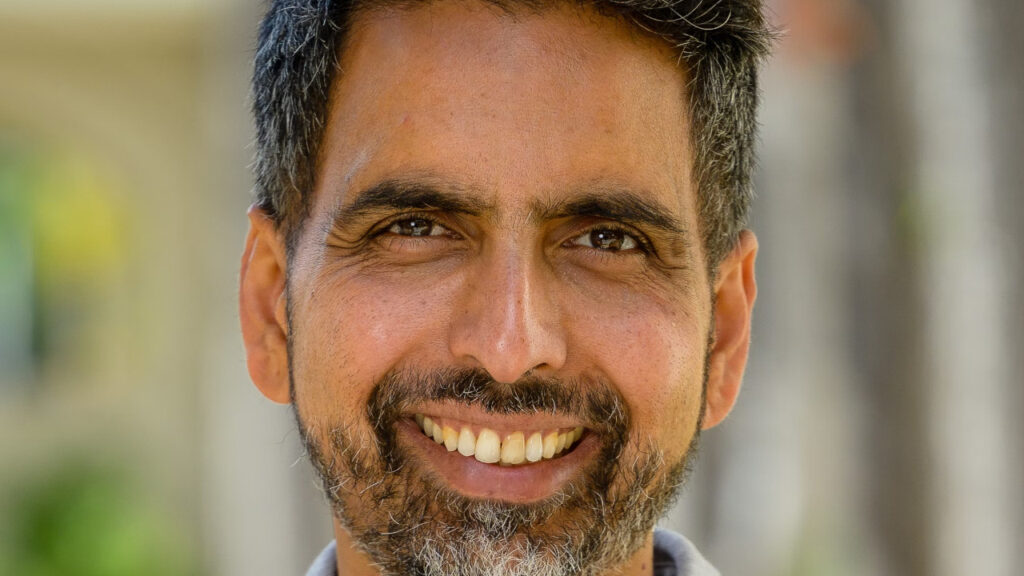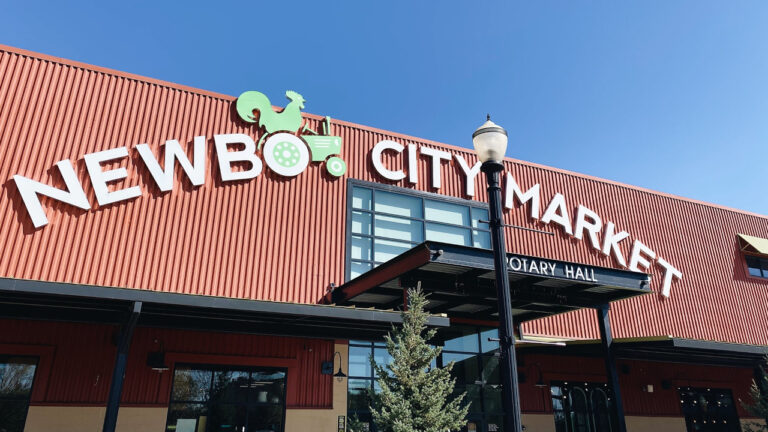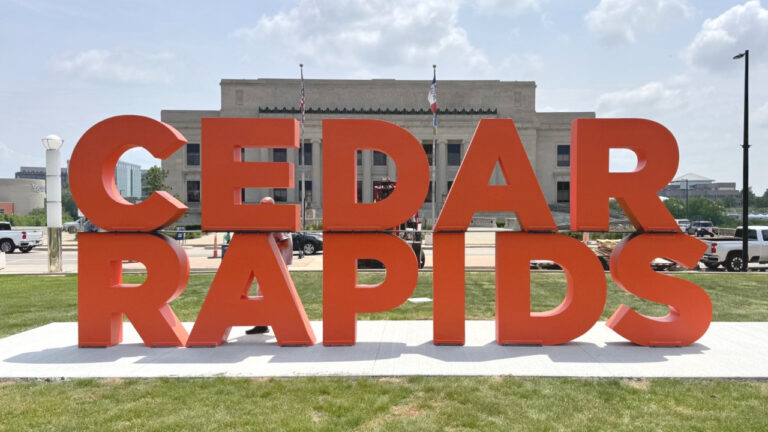Khan Academy founder Sal Khan will deliver a public lecture this month at the University of Iowa.
The lecture, “Reimagining Education and the Tools We Use,” will be presented Wednesday, April 23 at 7:30 p.m. in the Main Lounge of the Iowa Memorial Union. It is free and open to the public.
Khan Academy is a not-for-profit educational organization founded by Mr. Khan in 2008. The platform’s online materials cover subjects ranging from math and finance to history and art, with thousands of bite-sized videos, step-by-step problems, and instant progress information.
Khan Academy is also piloting an AI guide called Khanmigo that is a tutor and teaching assistant. Worldwide, Khan Academy has more than 160 million registered users in 190 countries, with free lessons available in more than 50 languages.
Mr. Khan was born and raised in New Orleans. His mother was born in Calcutta, India, and his father was born in Barisal, Bangladesh. Mr. Khan is a former hedge fund analyst with degrees from MIT and Harvard.
In advance of his UI lecture, Mr. Khan agreed to speak with the CBJ on the topics he plans to address, as well as the largest issues facing education, Khan Academy’s business model and how Khan Academy continues to further expand its mission of providing “free world-class education for anyone, anywhere.”
The following is a lightly-edited transcript of that conversation.
CBJ: What are the main points that you plan to address in your talk at the University of Iowa?
Mr. Khan: There’s obviously all the conversation about AI, generally AI in education, and there’s a lot of layers there. How is AI directly going to affect education with things like cheating? At the same time, people really need to learn these skills. But then there’s a broader question around what AI is going to do to the job market and the skills you need in this world. Hopefully, in part, Khan Academy can help that. Hopefully I’ll end it all with a note of optimism, especially for the students, that even though it looks like there’s a lot to worry about in the broader world with AI and other things, moments of intense change are also moments of intense opportunity. [For] this generation, it is an exciting time to be alive, and they are going to be able to do more than any other generation that’s ever lived. This is going to be one of those unusual moments in thousands of years of human history that they’re going to be first-person actors in. So hopefully leave them a little bit uplifted, after we talk about some of the scary stuff.
CBJ: I see that Khan Academy has introduced a new AI tool.
Mr. Khan: It’s more than two years in now. We were very early adopters. We had access to some of this technology months before the rest of the world had even seen ChatGPT, so we were working on it pretty early. We call it Khanmigo, but increasingly it’s just becoming integrated with everything that Khan Academy is doing. But it’s this idea of, there’s a lot of pitfalls, especially AI in education. How do you handle cheating? How do you handle young kids doing unproductive things or shady things with it? How do you handle data privacy and security? At the same time, how do you really get the positives of it? Can it emulate a tutor? Can it help teachers as the teaching assistant? That’s what we’ve been trying to do with Khanmigo. We launched it as a pilot two years ago, and now we’re over a million [students] formally using it. This is like a formal partnership with Khan Academy. They’re actually paying for the compute and the training and all of that. We’re trying to lower that cost as much as possible, because our mission is free world-class education for anyone, anywhere. But it’s growing faster than expected, we’re learning a lot, and I’m going to share that as well when I speak at the University of Iowa.
CBJ: Khan Academy has expanded from humble beginnings to become a global force in online education. Are you at all surprised by the company’s growth? And what are some of your keys to success?
Mr. Khan: You know, if you were to talk to Sal in 2008, this started as something of a family project. I did have delusions of grandeur at times where I said, this software, these videos are helping my cousins. (I was) already getting letters from other people saying that’s really helping. There’s no reason it couldn’t scale to one day millions of people. But I also said, ‘hey, Sal, is that realistic? How can you actually support it?’ There were some funders who wanted to fund it as a for-profit, but that just didn’t feel right. 2009 is when I quit my day job to work on it full-time. And at the time I was getting some early conversations with philanthropists. Most of those did not pan out. But I was feeling, if I could start working on this full-time, then maybe over my lifetime, I would be able to turn this into something that could reach millions.
The first year was hard, but when folks like [founding partners] Bill Gates and Google and Ann and John Doerr and others started to really come out of the woodwork – and not to support the organization financially, but also support it publicly, talking about how they use it – that put us on a much faster growth trajectory than I could have ever imagined. We’ve had many of those inflection moments, and now, I think we just recently crossed 180 million registered users. We’re in 50-plus languages. If you told me that back in 2008 or 2009, I would have said, that’s plausible, but it’s not going to happen.
I still view what we’ve done as a proof of concept, because our mission is free world-class education for anyone, anywhere. And the reality is, you ask most people in the world, they don’t have access to a free world-class education yet. So there’s a lot of work we have to do, more content, work with schools and ministries of education to be able to reach students, work on credentialing. I hope we can do high school diplomas and even college credit in the not too far-off future. We’re serious about this world-class education. It’s not just about a website that people might use whenever they want to. It’s that, for sure, but we really want to improve learning outcomes at the scale of billions of people eventually. So lots of work to do.
My advice is to think big, dream big, but make sure you’re taking small steps to get there. I know a lot of people who are good at operating and they’re good at executing, who can take the small steps, but almost from the get-go, they narrow their ambitions to a point that is neither inspiring or never have a chance of really making a dent in the world. But then I know a lot of other people who are daydreamers. In fact, there’s a lot of people in this category who like to dream big. You’ve got to execute on that idea, and you’re not going to be able to climb Mount Everest on that first step. You have to be prepared to chip away at it over years. I think being able to sit comfortably in that tension, in that middle ground, is important.
Some days I wake up a little pessimistic, saying ‘yeah, we’ve done a lot, but will we ever be able to reach a billion students getting credentials?’ And then I say, ‘Sal, look how far you’ve come. Look how far Khan Academy’s come. Just keep chipping away. In another 10 years, you’ll be surprised how far you get.’
CBJ: What is it that differentiates Khan Academy’s approach from other online providers? There have been many other platforms out there. What makes Khan Academy different?
Mr. Khan: It’s an important question, because it’s a nonprofit. I started off my career in the very for-profit worlds of tech and finance. I was actually very skeptical of the whole nonprofit world for many years, and now I find myself running one. But we exist in this middle ground where there’s parts of the world where market forces either aren’t working properly or they’re not leading to outcomes that are aligned with our values as a society. In education, I think it’s happening, because our values as a society are, if someone wants to learn, they should be able to learn. A lot of the for-profit incentives are very much ‘hey, let’s give it to someone who could afford it.’ The buyer, the decision-maker, the payer and the beneficiary are different people, so it doesn’t even necessarily lead to the best products getting chosen all the time in schools.
And on the other side, you can say, ‘well, the government’s job is to do things like education,’ but sometimes there’s gaps. They’re not always the most nimble, innovative parties, or efficient, either. So that’s the role of nonprofits, to be in that entrepreneurial, innovative space to really shepherd philanthropy, corporations, and maybe even earned revenue to people with a mission-focused goal.
And in this edtech world, I think the AI stuff only amplifies it. There’s a bit of an irony where edtech was a little bit of a third rail in venture capital investing, until Khan Academy came around, and people saw ‘wow, there actually is demand for scalable solutions.’ A lot of those companies are doing good things, have great products, but they’re definitely not thinking about how you reach all students. Honestly, they’re not always thinking about efficacy. They’re thinking about how they meet their sales numbers or their quarterly earnings. Sometimes that’s aligned with good outcomes, and sometimes it’s not. And I can tell you that as a former hedge fund analyst. I think that’s Khan Academy’s role, especially in this AI world where a lot of harm can be done and a lot of good can be done. Trust is of huge importance. So at a very high level, that’s why I think it’s important that we exist.
In terms of how we’ve differentiated ourselves over the years, this started as a family project, and people can tell. I’d like to think even in those early Khan Academy videos, they can sense that ‘this isn’t some corporation making this for me.’ This is much more than me now. I still make the bulk of the science and math videos, but they can tell that this is a person who cares about me and learning, and is passionate about the subject.
Most of our resources are on the software side. We care about the learning outcomes. We care about engaging students. We care about truly supporting teachers. That’s what we talk about at our board meetings. We don’t talk about how much profit we’re going to make, because we’re not for profit. I think that’s carried through.
So I’d like to think we could go toe to toe with any for-profit startup in terms of innovation and nimbleness, but we can also go toe to toe in terms of social impact, reach scale, thought leadership. We’re on that interesting middle ground.
CBJ: So in general, what is Khan Academy’s business model? I know you mentioned being a nonprofit, but there still has to be revenue involved.
Mr. Khan: Our budget is not small anymore. It’s going to be over $90 million this year. Even though that’s a large number – and it gives me some stress, because those are a lot of salaries to pay – I remind myself that that’s about the budget of some large high schools in the U.S., and we reach over 100 million folks in 50 languages. Right now [our budget is] about 70% philanthropic, and that’s anywhere from people donating $20 to some large foundations to big corporate sponsors. The remainder of that, let’s call it 20% to 30%, we are starting to build earned revenue, and that’s where things like school districts that want support and training and integration with their IT systems and district level dashboards and AI, we do charge them about $10 to $15 per student per year for that type of thing. So Khan Academy is free, but when they want all of that extra support, that does cost us something, and so we charge that to the districts.
CBJ: Iowa has shifted its educational funding model to provide education savings accounts for students to attend non-public schools. Is this a positive development, and will Khan Academy need to adapt its services in any way to address that model?
Mr. Khan: I try to stay out of the debate over whether it’s a good or a bad idea. We just try to look at what in whatever context we’re in, whether it’s Iowa or Ireland, what are the conditions? And then how can we work with people on the ground to maximize impact for students? So in Iowa, we are going to continue to work with the public school districts and with the charter schools. And if some of these ESA resources go to private schools, or if people want to do pod schools, Khan Academy is there for them, too. We are used heavily by the pod school community, homeschooling community, innovative school community. There is a virtual school in Arizona, a Khan World School, that we help start. It’s not Khan Academy, but I helped start it with Arizona State University, and it benefits from similar types of things. So we want to be able to reach students through whatever avenue we can best impact them. I think it is going to primarily be through the public school system, but it’s not exclusively going to be through public schools.
CBJ: President Trump has vowed to dismantle the Department of Education and return control of public education to the states. Do you have any thoughts on that initiative?
Mr. Khan: As has been pointed out by a lot of folks, the federal amount of education funding is roughly 10% on average. It can be a little bit more for certain states or a little less. But it’s hard to form a strong opinion until we know exactly what’s happening. It’s not clear. Are they just going to shuttle all of that funding and services into other departments, in which case maybe it’s a limited effect? Are they going to take whatever money they were giving to, say, Iowa, [and] give [it] to the state, and now the state decides? That might also have a limited effect. Or is all that stuff, or a large fraction of that stuff, just going to disappear, which could have, depending on the state, a larger impact? We will see. I don’t have enough information yet to know how big of an impact it’ll have.
CBJ: What measurements can you point to regarding the overall effectiveness of Khan Academy?
Mr. Khan: You can get a lot more info if you search for “Khan Academy efficacy research” or something like that. There’s 50-plus efficacy studies on Khan Academy. They all have the same narrative, that if students are able to put in even 60 minutes a week of personalized practice, that they’re accelerating 30, 40, 50% more than expected. These have been pretty rigorous studies. Most of them have been done by independent third parties. Some of them are correlative, but there’s even been a few lately that have come out causal, where they’re even comparing students to themselves, in a year where they’re using more or less Khan Academy in a year. It’s pretty compelling evidence.
CBJ: What’s the next big thing on the horizon for Khan Academy? Do you have any other major initiatives in the works, or where do you see things going?
Mr. Khan: We’re working on a version of Khan Academy that’s going to be even more AI-first, and this is supporting both students and teachers with things like writing lesson plans and progress reports. We’re working on the future of writing. Obviously, a lot of people are worried about writing in an AI world, but we think there’s a way to do it that can actually support students better and give teachers more transparency and undermine all forms of cheating. You can look up “Khan Academy writing coach” if you want to learn more about that. And then we’re thinking about the future of assessment, because AI does now open up the possibility of having richer assessments that allow students to give more open-ended responses or to do things more like simulations, as opposed to just answering multiple choice questions.
We’re also doing a lot for early learners. We have a platform, Khan Academy Kids, that’s used by 2 million early learners every month. We want to think about how that could help people with language acquisition, especially English. And the credentialing that I mentioned – I hope in the next year or two, we can start giving high school credits, or even high school diplomas, for work on Khan Academy.
We also have a platform around peer-to-peer tutoring, schoolhouse.world, where people can get free live tutoring from volunteers, and in the future, maybe some college credit for some of the work they do as well. So, lots going on.
CBJ: What aspects of Khan Academy are you most passionate about? When you give your elevator speech about Khan Academy, what do you say is your crowning achievement?
Mr. Khan: When I hear stories, like when I’m going through security at TSA and the person wanding me up is saying ‘Wait, Mr. Khan, you got me through community college.’ Or I just learned about this young girl in Afghanistan, and the Taliban kept her from going to school – Khan Academy was her school, and then she was able to prove her knowledge through the schoolhouse platform that I just mentioned. MIT took that and admitted her without a high school diploma or anything, because she was able to prove she (had) the knowledge. So I hear stories like that, and I [believe] we are making headway towards this reality where, literally, if you’re born anywhere and you just have access to a low-cost device and some type of internet connection, you actually can get access to your potential. We’re not fully there yet, but some of these early stories are signs that we could get there.









